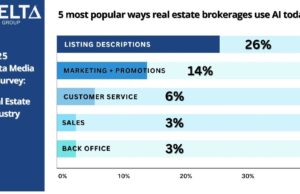AIA/HUD Secretary Awards Recognize Three Outstanding Housing Projects
Washington, D.C. – April 28, 2011 – (RealEstateRama) — The American Institute of Architects’ (AIA) Housing and Custom Residential Knowledge Community, in conjunction with the Office of the Secretary of the U.S. Department of Housing & Urban Development (HUD), recognized three recipients of the 2011 AIA/HUD Secretary Awards. The categories of the program include (1) Excellence in Affordable Housing Design (2) Creating Community Connection Award (3) Community-Informed Design Award (no recipient selected this year) (4) Housing Accessibility – Alan J. Rothman Award. These awards demonstrate that design matters, and the recipient projects offer examples of important developments in the housing industry.
The jury for the 2011 AIA/HUD Secretary Awards includes: Katherine Austin, AIA, (chair), Katherine Austin Architect; Luis F. Borray, Assoc. AIA, U.S. Department of Housing & Urban Development; Claire Conroy, Residential Architect Magazine; Regina C. Gray, U.S. Department of Housing & Urban Development; Mike Jackson, FAIA, Illinois Historic Preservation Agency; Luis Jauregui, AIA, Jaurequi, Inc. and Marilys Nepomechie, FAIA, Florida International University.
The descriptions below give a brief summary of the projects. You can learn more about these projects by clicking on the name of the project/firm name. If you are interested in obtaining high resolution images, please contact Matt Tinder at ">.
Category 1: Excellence in Affordable Housing Design
New Carver Apartments, Los Angeles
Michael Maltzan Architecture, Inc.
Located just south of the downtown core of Los Angeles, the New Carver Apartments pushes the boundaries of what affordable housing should look like and how architecture can transform individuals and communities. The building provides permanent supportive housing for 95 formerly homeless residents who earn less than 50% of the area median income while reviving an under-utilized neighborhood where there is a critical shortage of affordable housing stock. By incorporating medical and social services support facilities on the ground level and integrating shared public spaces throughout the building, the architecture encourages its residents to not only reconnect with each other but to the larger city beyond. Financing was provided by the Los Angeles Housing Department, State of California Department of Housing and Community Development, along with stimulus funds from the American Recovery and Reinvestment Act.
Category 2: Creating Community Connection Award
Haven for Hope, San Antonio
Overland Partners Architects
The stakeholders’ goal was to not only provide services that treated the causes of homelessness but to create a flexible campus that would allow for the expansion of programs and the development of new ones. This $60 million project includes 15 buildings of approximately 300,000 square feet of total space, with 998 beds and the capacity to sleep an additional 500+ individuals in the courtyard. It is the largest and most comprehensive homeless facility in the United States and has already been visited by delegations from more than 40 cities, quickly becoming recognized as a new national model for homeless transformational centers.
Category 4: Housing Accessibility—Alan J. Rothman Award
Magnolia Mid-Mod, Seattle
röm architecture studio
This project, a whole-house interior renovation of a mid-century modern home, had no choice but to adhere to universal designed concepts. It belongs to a family of three, two of which are wheelchair-users. The family needed more useable space within the existing exterior walls. As a result, the home became a laboratory for solutions that are both highly functional and universally-appealing, with the intent to inspire others to consider the investment potential, both financial and experiential, of planning for a broad range of mobility over a long period of time.About The American Institute of Architects
For over 150 years, members of the American Institute of Architects have worked with each other and their communities to create more valuable, healthy, secure, and sustainable buildings and cityscapes. Members adhere to a code of ethics and professional conduct to ensure the highest standards in professional practice. Embracing their responsibility to serve society, AIA members engage civic and government leaders and the public in helping find needed solutions to pressing issues facing our communities, institutions, nation and world. Visit www.aia.org.
Contact:
Matt Tinder
202-626-7462
http://twitter.com/AIA_Media

















